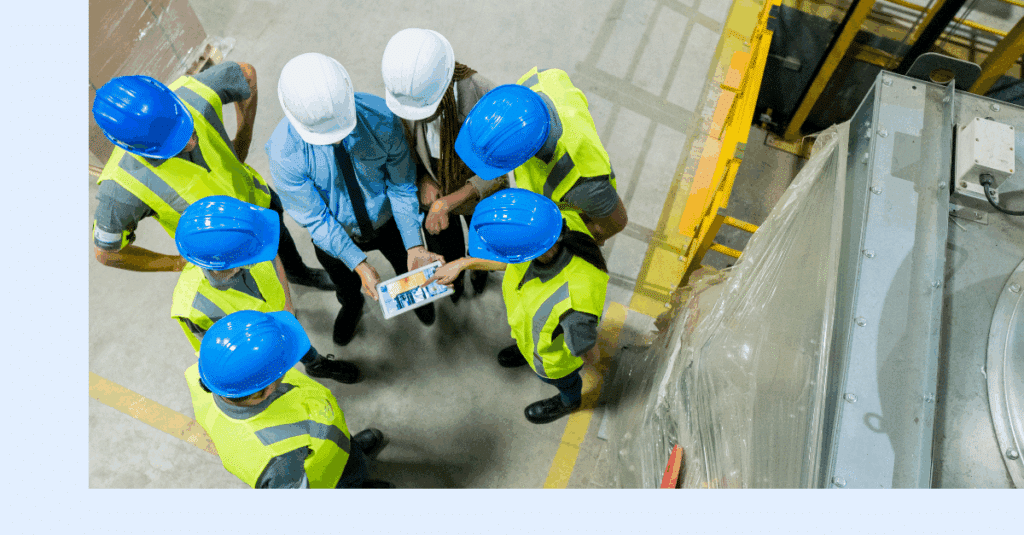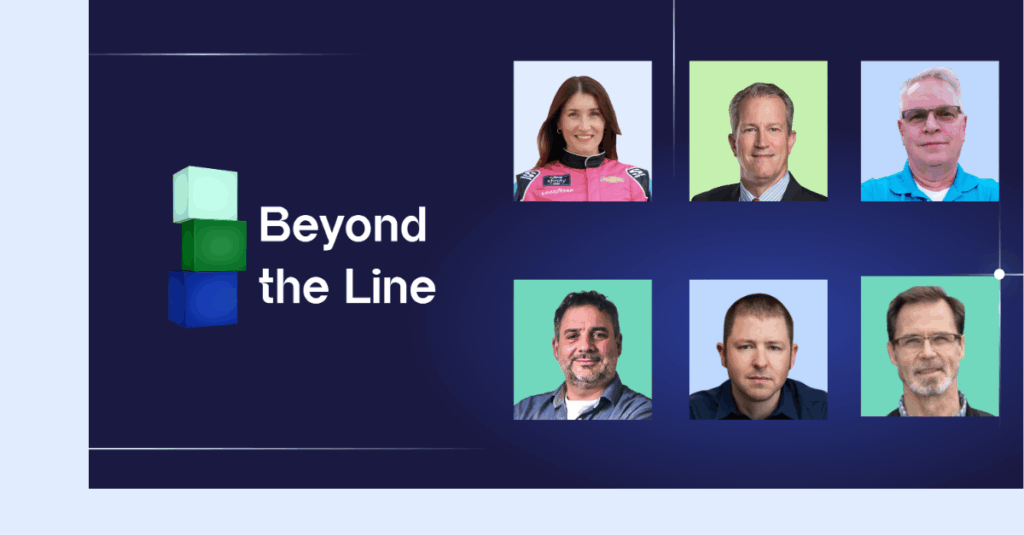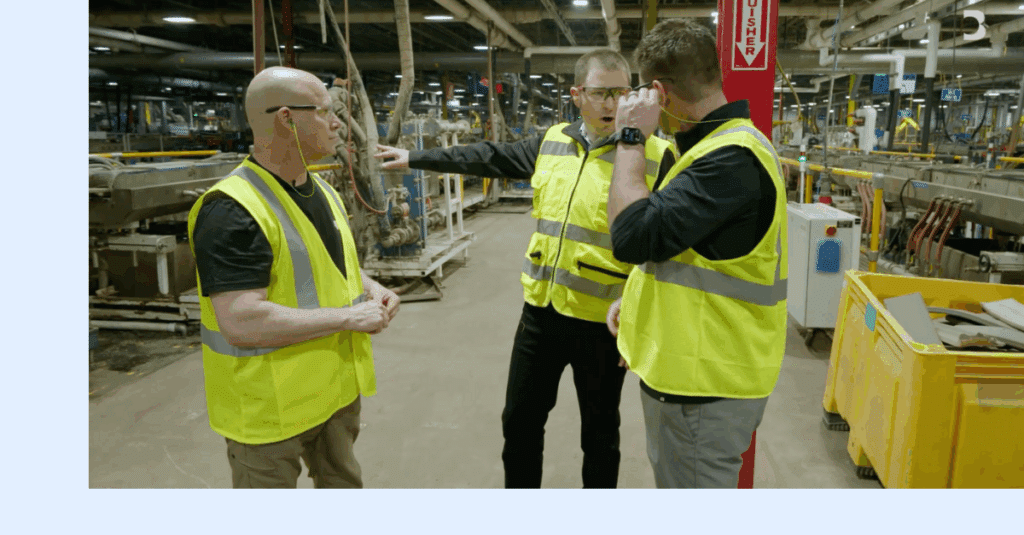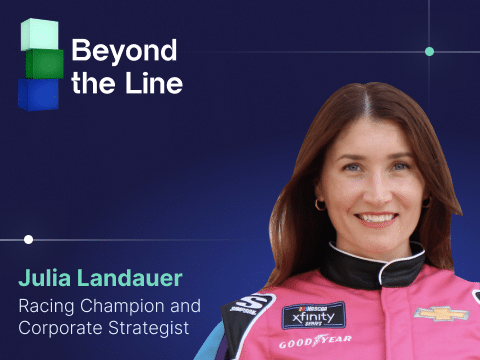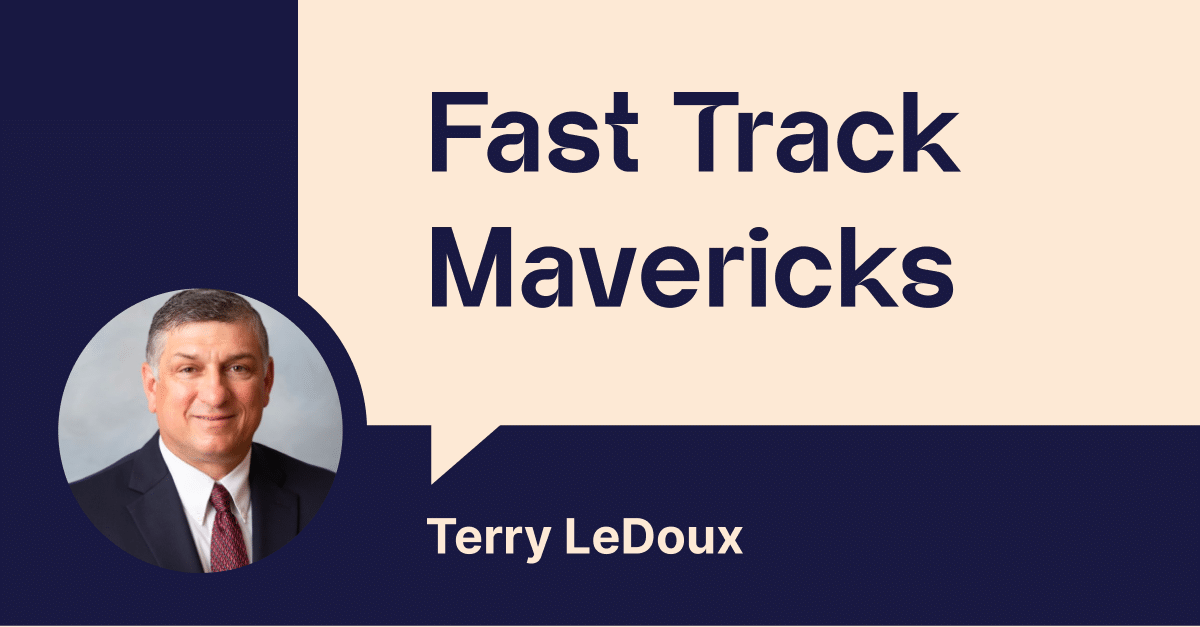
Why did they succeed where so many others have failed? In this series, we profile manufacturing leaders who rapidly scaled digital innovations across their organization. While united by a people-first mentality, they each come backed by their own personal experiences and style. For this edition, we talk to Terry LeDoux, retired VP of Digital Manufacturing at Nestlé Purina Pet Care. “First off, we never used a term like change management – especially on the floor.”
Bringing Work Home
When Terry LeDoux retired as VP of Digital Manufacturing at Nestlé Purina Pet Care, he had an established mantra: “Think big, start small, scale quickly”. And as a practiced communicator, he was able to share this vision with both C-suite and the plant floor – to get the job done.
“As a child, I was very shy and quiet, but extremely observant,” says Terry. “And as you get older, go to college and get a job working with people, you start to learn you have to know more about a person than just their job. Life has to have meaning and work must have purpose. What’s going on at work and what’s going on in their homelife are very connected. And I think that’s what I caught on to at a very early age: that sometimes a mishap at work was really driven by something outside – and vice versa. So, you have to take the time to really talk to people, get to know who they are, and let them know who you are,” says Terry.
You have to take the time to really talk to people, get to know who they are, and let them know who you are.
People Are People – Not Washing Machines
“So, twice a year, I would meet with every team member for 30 minutes. We didn’t talk much about work, we talked about life. How are things going at home? How are your kids doing? What are your passions or hobbies? Is there anything I need to do for you? And they would ask me about what I was doing outside work. So, it was building that relationship and building trust. So, they knew they could come to me with anything, and we could sit down and really talk about it. You build lifelong relationships this way.”
“At the same time, people working in large groups can do some really powerful things. And by working with others to help clarify your vision, this quickly becomes our vision as a team. And once you have a joint vision, you as leader now need to focus on removing barriers to that vision. Do these two things and people will give their all to achieve that shared vision.”
These two ideas really drove me: 1) that organizations can be amazing and 2) people are people…
“And together, these two ideas really drove me: 1) that organizations can be amazing and 2) people are people. You have to treat them like people and not washing machines that perform repetitive tasks.”
Starting Small With Digital Duct Tape
“Seeing the forest through the trees requires you to ask the question in a different way. I always used to challenge the team and myself by asking, ‘If we absolutely had to do it, how would we do it?’ And then I’d coach people that it’s okay to break rules as long as we mitigate risk. Like with scaling, nobody said we couldn’t go fast. The only people holding us back was us,” says Terry. “Okay, there will be naysayers, but you have to learn to work with and around them. Eventually they will come along.”
it’s actually okay if it breaks a bit while we’re testing it.
“But when it comes down to it, if you get in a room with people, and give them that perspective, and brainstorm ideas, you start to really identify those things that are keeping you from moving forward. And that’s where a term like ‘digital duct tape’ came from. You get in the room with the infrastructure guys who say you have to do it in a certain way otherwise it will break. And my response is: it’s actually okay if it breaks a bit while we’re testing it. Let’s remove the industrialization side of things, focus on mitigating risk and just go fast. And if we see benefits and ROI, you now have the justification to industrialize the solution quickly.”
Looking Beyond The Technical

When looking back at his career, Terry is proudest of those times he could prove something was in fact not impossible. “It’s those moments when you build the trust of leadership in what we could do,” says Terry. For instance, when Nestlé bought Purina in 2001, Terry was asked to lead the reverse integration of the established Nestlé Pet Food manufacturing and distribution sites and have them go on the Purina systems. “And this needed to be done in six months with no customer service failures. Of course, many said, ‘You can’t do that!’ And I answered, ‘Why not?’”
“It was more than just technical. It needed an organizational strategy, with the right players and right support/escalation processes. Most of the integration team on the ground were from the factory floor or corporate team members who only supported factory floor operations,” says Terry.
Other Fast Track Mavericks On How To Scale Innovation:
Alvaro Cuba Simons: ‘Be Open. Be Curious. Bring The Best Of Yourself To The Team’
Scott Reed: ‘Going Beyond The Firefighting And Really Solving Something’
Dave Penrith: ‘If People Feel Safe, They Fly’
“It worked. Six months later, and a whole lot of hours and plane trips bouncing all across the country, we had reverse integrated the six factories they requested. We had no significant customer service upsets. It wasn’t perfect but it was fast. It was an enormous level of cultural change where we learned the best of both Nestlé and Purina cultures to create an amazingly successful business and organization.”
And Terry did not look back as Nestlé Purina Pet Care continued to roll out cutting-edge technologies.
Why So Slow?!?
“But in terms of the industry as a whole, I’m actually confused and concerned about where we are after seven years of Industry 4.0 and digital transformation. We still have so many companies in pilot purgatory, or with single point solutions, or massive AI projects that take years to stand up. They are all missing all this low-hanging fruit digital transformation provides by enhancing human and machine performance,” says Terry.
But in terms of the industry as a whole, I’m actually confused and concerned about where we are after seven years of Industry 4.0 and digital transformation.
“I often hear people say you can’t change factory culture in a factory in 90 days. And, of course, I disagree! The tech is there, along with the UX design and the behavioral science, that allows you to move this fast. It’s more about engaging people in a way that has them really emotionally participating in the manufacturing process. And then giving them tools to do it.”
Move Fast – And With The Right Partners
“Look at Augury… What operator doesn’t want a machine to come and tell them, ‘Hey, there’s something wrong with me and I need your attention before something really bad happens. Here are the three things to look at’? Who doesn’t want that on their production line – especially when that line is running at a thousand cans a minute? Every operator wants that.”
“So we were able to apply these great technologies in a very short time with the help of some great partner vendors. And now that I’ve retired, it’s not as if the team at Nestlé Purina Pet Care and their vendor partners are slowing down. They’re not stopping. They want to keep innovating. Once you taste the benefits, you just want more. And it’s just fun and exciting to be a part of a broader industry team engaged in a common vision or common problem solving. This is how you achieve things.”
Bringing Everyone Along For The Ride
A big part of Terry’s job was to act as interpreter between C-Suite’s latest ambitions and the plant floor’s enduring realities. “First off, we never used a term like change management – especially on the factory floor. We broke that mold,” says Terry.
Each factory created their own success leading to ever increasing successes.
“I think as we started this transformation, we learned that if we had a really good UX design, we didn’t need to train as much. And what we really needed to do was enlist the factory floor teams. They knew better than anyone where the issues were and so needed to be a part of the solution from the very beginning. And that was our approach. We never went out and said, ‘Hi, we’re from the change management team and we are here to help you do your job better!’ We’d go out and ask if they could help us test this new tool and they were an integral part of defining how this tool worked for them on the factory floor. Our job was to provide the factory floor with support and resources to be successful. Each factory created their own success leading to ever increasing successes.”
Accept The Failures, Celebrate The Wins
“People jump on that. And then as they go through that pilot, you really need to push the recognition of success or failure, not just inside on that factory floor, but across all the factories. If we failed in the pilot, we recognized and thanked everyone (and often even celebrated). We then asked them what they wanted to try next, because the problem didn’t go away. And this led to factories always wanting to be the pilot.”
If you give the people a platform to participate and contribute, it is simply amazing what they can accomplish.
“Even during scaling a successful solution, we’d always go into each factory with the same approach: Help us test this further. Every successive site taught us something we didn’t know and they could share back with their sister sites. If you give the people a platform to participate and contribute, it is simply amazing what they can accomplish.”
‘By God, We Care’
“Project management is also key. That meeting cadence needs to be established. A player on the ground has to meet with you once a week to get information so you can be very responsive to the needs of the manufacturing floor. You also have to have a monthly or quarterly meeting cadence with senior leadership to keep them apprised of progress or slow downs that need their support. You cannot move at the speed of digital without these meeting cadences.
Success in manufacturing is connecting people to people, teams to teams, people to machines, and machines to people.
“Again, this all very much follows this idea of: This is your tool for your factory and we are here to support you. And by God, we care! If they tell us something’s wrong, we’re going to jump in and try to help. I’ve said it hundreds of times: Success in manufacturing is connecting people to people, teams to teams, people to machines, and machines to people.“
“Focus on enhancing human and machine performance as a single purpose and not mutually exclusive objectives. And that’s the path that we took in every factory. Only then can you move at the speed of digital.”

